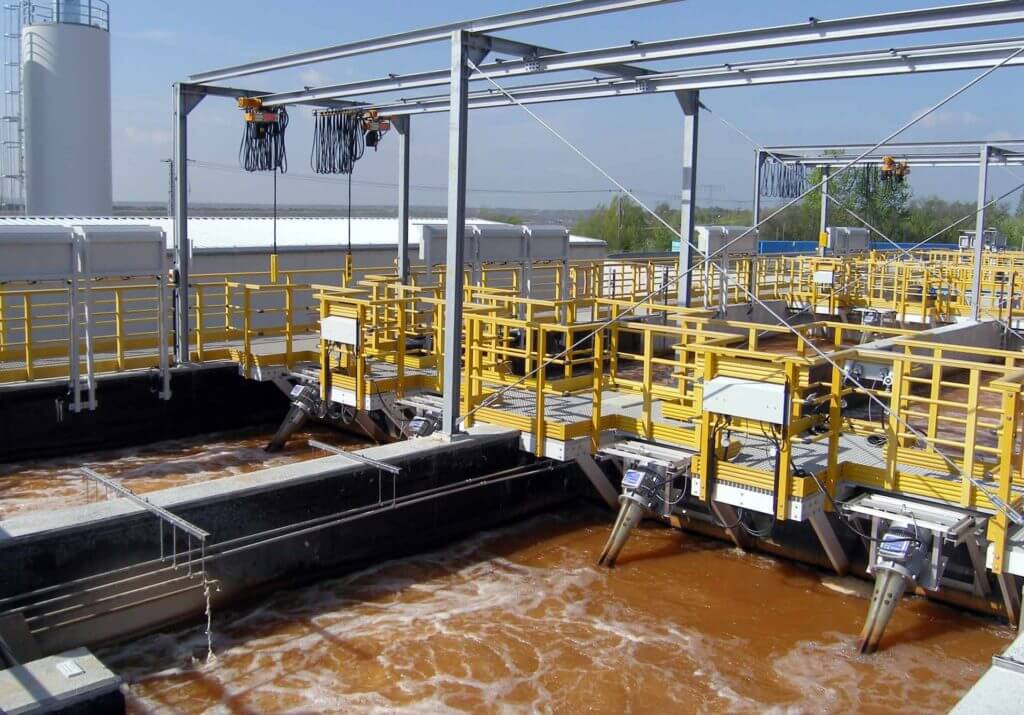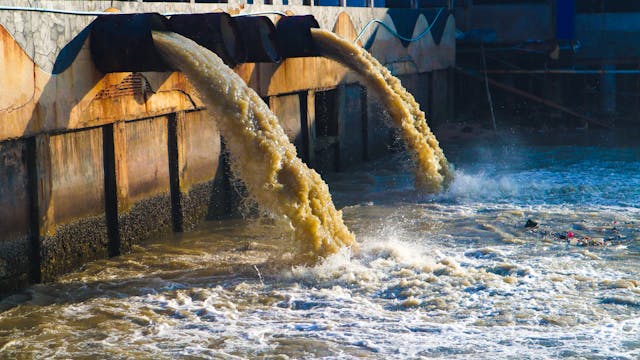Developments and Breakthroughs in Hazardous Waste Water Treatment Technologies
The landscape of industrial wastewater treatment is undergoing a transformative shift, driven by innovations that improve both efficiency and sustainability. Arising modern technologies, such as membrane bioreactors and microbial gas cells, are redefining contaminant elimination processes while adding to power generation. Moreover, source recovery approaches are acquiring traction, lining up with round economic climate concepts. As regulative criteria evolve, the combination of AI and artificial intelligence into wastewater monitoring systems assures to streamline operations and make sure compliance. Nevertheless, the complete implications of these developments elevate important questions about their scalability and long-lasting effect on sector techniques.
Review of Waste Water Treatment Technologies
Wastewater treatment modern technologies incorporate a series of techniques developed to remove contaminants from commercial effluents prior to their launch right into the atmosphere. These innovations are vital for maintaining ecological equilibrium and making sure compliance with environmental laws. The key classifications of wastewater treatment consist of physical, chemical, and organic methods, each offering unique purposes based upon the nature of the pollutants existing.

Organic therapy methods utilize bacteria to weaken organic matter, making them especially efficient for organic-rich effluents. Strategies like turned on sludge and biofilm activators harness the all-natural degradation capabilities of germs, causing substantial decreases in biochemical oxygen need (FIGURE)
Advanced Filtration Techniques
Advanced filtration techniques represent a vital evolution in the realm of industrial wastewater treatment, enhancing the efficiency of contaminant removal procedures. Industrial Waste Water Treatment. These methods encompass a series of technologies, consisting of microfiltration, ultrafiltration, nanofiltration, and turn around osmosis, which offer sequential barriers for various particle dimensions and chemical frameworks
Microfiltration and ultrafiltration make use of membrane layer systems to eliminate suspended solids, microorganisms, and bigger natural molecules, improving the quality of effluent previous to more treatment. Nanofiltration bridges the gap in between ultrafiltration and turn around osmosis, successfully getting rid of divalent ions and natural substances, therefore reducing the load on downstream procedures.
Reverse osmosis supplies the highest degree of purification by allowing just water and little molecules to travel through its semi-permeable membrane layers, making it optimal for reclaiming top quality water from commercial effluents. Recent developments in membrane modern technology, consisting of the development of even more resilient and fouling-resistant products, have dramatically enhanced operational performance and lowered costs.
Including these sophisticated purification methods not just improves the total treatment process however also adds to sustainability efforts by enabling water reuse and resource recuperation in industrial setups. (Industrial Waste Water Treatment)
Biological Therapy Innovations

Additionally, the growth of crafted biological systems, such as membrane layer bioreactors (MBRs), combines organic treatment with advanced membrane layer filtration. This assimilation enables for higher effluent high quality and reduced impact, making it suitable for space-constrained commercial facilities. Technologies in genetically engineered microorganisms have actually likewise arised, improving the biodegradation of specific pollutants, such as drugs and heavy steels, that are typically testing to remove.
In addition, the implementation of bioaugmentation techniques, where useful germs are introduced to improve the existing organic treatment procedures, has actually shown encouraging results in enhancing therapy efficiency. These technologies collectively indicate a trend towards even more lasting and efficient biological treatment methods that can adjust to the evolving complexities of commercial wastewater streams. As markets proceed to focus on environmental compliance, these biological advancements will certainly play a critical function in wastewater administration.

Resource Healing Techniques
In industrial setups, the integration of source healing approaches has become significantly important for boosting sustainability and lessening waste. These methods concentrate on extracting valuable materials and energy from wastewater streams, thus changing possible contaminants right into recyclable sources.
One popular method is vitamins and mineral healing, where nitrogen and phosphorus, frequently existing in excess in wastewater, are caught and exchanged plant foods. This not just decreases ecological impacts however additionally provides a circular economy option for agricultural applications. In addition, innovations such as anaerobic food digestion enable the conversion of organic waste right into biogas, a renewable energy resource that can counter fossil fuel use in industrial procedures.
In addition, advanced filtering and membrane layer technologies help with the healing of commercial byproducts such as metals and salts. These recuperated products can be reintegrated right into manufacturing procedures, reducing the need for virgin resources.
Future Patterns in Drainage Monitoring
As sectors significantly focus on sustainability, the future of wastewater management is set to undergo significant improvements. Technological innovations, such as man-made knowledge and machine learning, will enable much more effective monitoring and administration of wastewater systems. These innovations can predict maintenance demands, maximize therapy procedures, and improve decision-making, eventually decreasing operational costs and environmental influence.
In addition, the assimilation of round economic climate principles will play an essential role in wastewater management. Industries are anticipated to move towards systems that check these guys out not only deal with wastewater yet likewise recover valuable sources, such as nutrients, water, and power. This transition will certainly decrease waste and advertise the reuse of materials, aligning with international sustainability goals.
Emerging therapy methods, such as membrane bioreactors and progressed oxidation processes, will better improve the effectiveness of wastewater therapy, enabling for better effluents appropriate for reuse. Additionally, governing frameworks are most likely to progress, emphasizing more stringent requirements for wastewater discharge and motivating markets to adopt ingenious treatment remedies.
Final Thought
In final thought, the advancement of commercial wastewater treatment innovations shows a considerable change towards enhanced effectiveness and sustainability (Industrial Waste Water Treatment). Advancements in innovative purification techniques, biological treatments, and resource recovery techniques highlight the market's dedication to ecological stewardship.
The landscape of commercial wastewater therapy is going through a transformative change, driven by innovations that improve both effectiveness and sustainability.Wastewater therapy innovations include a variety of techniques created to get rid of pollutants from industrial effluents before their release right into the environment.Harnessing the power of biological processes has actually led to substantial technologies in the therapy of commercial wastewater.In addition, the application of bioaugmentation this link methods, where helpful germs are introduced to enhance the existing organic therapy processes, has shown encouraging outcomes in enhancing treatment efficiency. These technologies jointly represent a trend in the direction of even more lasting and efficient organic treatment methodologies that can adjust to the progressing complexities of industrial wastewater streams.